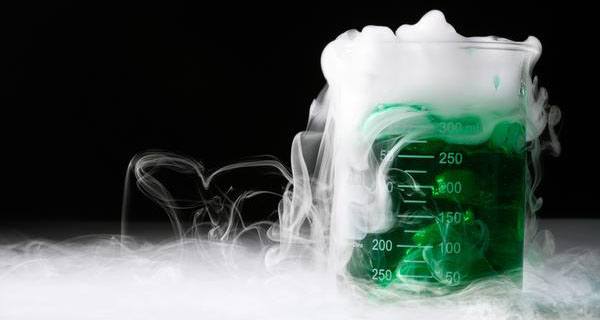Salam (May God Bless you). Today I am writing about chemical reactions and the factors which affect them. Chemical reactions are ways in which useful materials and compounds are formed and these reactions are also used to observe the rate at which the chemical reaction occurs.
Rate of Chemical reactions
There are various chemical reactions. Some are so fast which occur so fast that they occur in a blink of an eye, while others are so slow that we fail to see their existence. During a chemical reaction, the concentration of reactents decreases while the concentration of the products increases. The rate of reaction is the amount of products produced over a period of time or the loss of mass of the reactents during a certain amount of time: Loss of concentration of reactents or  gain in concentration of products / time.
gain in concentration of products / time.
Some chemical reactions produce gases which can be observed with a gas syringe. There are three types of reactions commonly used to observe the rate of reaction, one is the reaction between a simple metal with a dilute acid, one is reaction between a metal carbonate with a dilute acid, and the last one is a reaction between thiosulfate and dilute acid. The first 2 reactions produce gas. Calcium carbonate and dilute acid reactions should be avoided because calcium sulfate is produced which is a precipitate of the reaction, it makes it hard to observe any changes in the chemical reaction.
To show the rate of reactions on a graph we use a rate curve. The rate curve shows the loss of concentration of reactants over a certain period of time and may also show the amount of products formed over time. The factors to know about a rate curve is:
rate curve shows the loss of concentration of reactants over a certain period of time and may also show the amount of products formed over time. The factors to know about a rate curve is:
- The steeper the rate curve, the faster the rate of reaction.
- The rate of reaction is always greater at the start of the reaction.
- When the rate curve becomes horizontal then the reaction is complete.
Collision Theory
The collision theory was inspired from the kinetic particle theory, according to the collision theory, the particles of the two reactents react with each other by collision. The particles of the two reactents collide to start a chemical reaction. The factors to know about the collision theory is:
- The reaction will not take place until the particles collide together.
- The particles have a certain amount of energy which when collided combines and then forms enough energy to activate the reaction. If the energy is not enough then the reaction will not take place.
- The particles should have a complimenting geometry for colliding and starting a reaction.
- If the particles are heated then the particles will gain a lot of energy, enough to collide faster.
- This does not mean that all the particles colliding will start a reaction, but the reactions which start are all due to the colliding particles as some particles do not have a sufficient energy.
Catalysts
Catalysts are those chemicals which alter and most often increase the rate of reaction without being chemically changed itself. This is because a catalyst provides an alternate path towards the start of the reaction and lowers the activation energy needed for the chemical reaction. Most catalysts are transition elements while others are compounds of transition elements. Some catalysts actually even lowers the rate of reaction and are called retarders or inhibitors or even negative catalysts. Those which increase the rate of reaction are called positive catalysts.
Factors that affect the rate of reaction
Temperature
If you have read my post kinetic particle theory and Energy from Chemical Reactions you will know that once heated, the heat energy will be converted into kinetic energy in the particles and will vibrate vigourusly. This causes the particles to collide much more quickly and will result in a quicker rate of reaction. However if the temperature falls, then the bonds between the particles will soon form much more stronger and the rate of reaction will slow down so much that it would seem to have stopped completely. This is because, the particles will collide much more slowly.
Concentration and Pressure
If the concentration is high then there will be more particles needing to collide to complete the reaction which is why the higher the concentration is then the slower the rate of reaction is. In case of pressure the higher the pressure the faster the rate of reaction will be.
Catalysts
The presence of a catalyst in a reaction will also affect the rate of reaction. If using a positive catalyst and in a good and specific quantity then the rate of reaction will be faster.
Surface Area
The surface area of an object depends upon how small the size of the object is. Such as a things as small as a tablespoon of powder has a large surface area while a cube of same mass has the smallest surface area. If you add a teaspoon of powdered sugar in your cup of tea it will dissolve much more quickly than a few cubes of sugar with the same mass. This shows that the larger the surface area the greater the rate of reaction.
